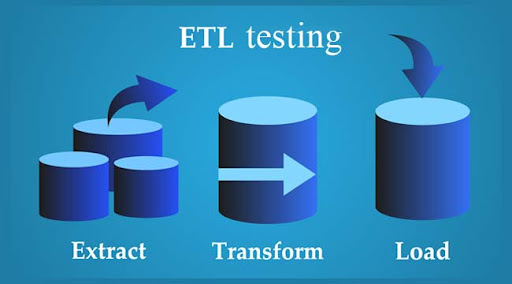Decoding the Differences Between API and ETL Testing

If you’ve ever found yourself confused between API testing and ETL testing, you’re not alone. In today’s data-driven world, understanding the nuances of testing types is essential for QA engineers, developers, and data professionals alike. At SURESH IT ACADEMY- the best APL testing institute in Hyderabad, we provide offline and online training from industry experts.
If you’re also someone who’s often misunderstood between these two testing domains, then by the end of this blog, you’ll not only understand what sets API and ETL testing apart but also know which’s right for your career path.
In this blog, we’ll also explore what API and ETL testing are, key differences between the two, tools used, scenarios where each applies, and a practical comparison to help you grasp the concepts easily.
UNDERSTANDING WHAT IS API TESTING?
API (Application Programming Interface) testing focuses on validating the functionality, reliability, performance, and security of APIs. APIs act as a bridge between different software systems, allowing them to communicate. It also ensures that requests sent to the system return the correct responses and behave as expected.
KEY FOCUS AREAS IN API TESTING:
1. Request and response data- This involves sending a request to the API and checking if the response returns the correct data.
2. Status codes- HTTP status codes (like 200 OK, 404 Not Found, 401 Unauthorized) indicate the result of the API request.
3. Authentication and authorization- Many APIs are secured, meaning users must prove their identity and have permission to access specific resources.
4. Data formats (JSON, XML)- Data formats are essential to verify the structure, format, and content of this data to ensure smooth communication between systems.
5. Performance under load- Testers look for speed, stability, and scalability under stress or peak usage conditions.
COMMON TOOLS USED:
Postman, SoapUI, REST Assured, JMeter (for performance) and Swagger.
UNDERSTANDING WHAT IS ETL TESTING?
ETL stands for Extract, Transform, Load. ETL testing is the process of verifying that data is correctly extracted from source systems, transformed according to business rules, and loaded into target systems such as data warehouses. It also ensures that data is moved and reshaped accurately across systems for reporting or analysis. SURESH IT ACADEMY- best ETL testing institute in hyderabad is your go-to destination for getting in-depth knowledge on ETL testing with real-life examples.
Key Focus Areas in ETL Testing:
1. Data completeness- This ensures that all expected data from the source systems is successfully extracted, transformed, and loaded into the destination.
2. Data transformation logic- This step verifies whether the applied transformation rules are correct and consistently implemented.
3. Data accuracy and integrity- This includes validating relationships, formats, and constraints (like primary keys, foreign keys, and null values) to ensure nothing is broken.
4. Performance and load testing- This testing checks how efficiently the ETL pipelines run under peak loads, whether they complete within the required time, and if they can scale with increasing data sizes.
5. Data reconciliation- This involves comparing source data with the data loaded into the destination to ensure nothing is missing, duplicated, or altered incorrectly.
COMMON TOOLS USED:
Informatica, Talend, Apache Nifi, QuerySurge and SQL-based custom testing.
WHEN TO USE API TESTING VS ETL TESTING?
Choose API Testing when-
- You need to verify integrations between software systems
- You’re testing backend services in microservice architecture
- Your product relies heavily on REST/SOAP APIs
Choose ETL Testing when:
- You’re validating the correctness of data movement and transformation
- You’re working on data warehousing or BI projects
- You need to ensure data quality for analytics
REAL-LIFE ANALOGY-
Think of API testing like checking the customer service at a hotel. You’re testing if your requests (like room service or check-in) are fulfilled correctly and efficiently. Now, think of ETL testing like inspecting the kitchen operations. You’re making sure ingredients (data) are collected, cleaned, cooked (transformed), and served on time in the right format. Both are crucial, but they serve very different purposes.
TOOLS AND SKILLSETS REQUIRED-
API Testing Skillset:
- Knowledge of REST/SOAP APIs
- Understanding of HTTP methods and status codes
- Familiarity with tools like Postman, Swagger
- Scripting (JavaScript, Python) for automation
ETL Testing Skillset:
- Strong SQL knowledge
- Understanding of data models and warehousing
- Familiarity with ETL tools like Informatica or Talend
- Attention to detail for data quality validation
WHY THIS KNOWLEDGE MATTERS?
In today’s tech landscape, many projects involve both API and ETL components. Whether you’re a QA professional or a developer, understanding these differences helps you test more effectively and collaborate better across teams. Moreover, with the rise of data-centric applications and microservices, API and ETL testing are becoming foundational skills in many IT roles.
CONCLUSION-
API and ETL testing serve unique purposes in the software and data ecosystem. While API testing ensures seamless communication between systems, ETL testing guarantees that data is accurately processed and ready for business use. Understanding both will make you a more versatile and valuable tech professional.
If you’re looking for an institute which has various data science courses such as Full-stack testing, Aws with DevOps, Data Analyst with Power BI, etc with real world projects and industry experts then SURESH IT ACADEMY- best Information Technology institute in hyderabad is the right place for you. Join us now!
FOLLOW US ON INSTAGRAM!













